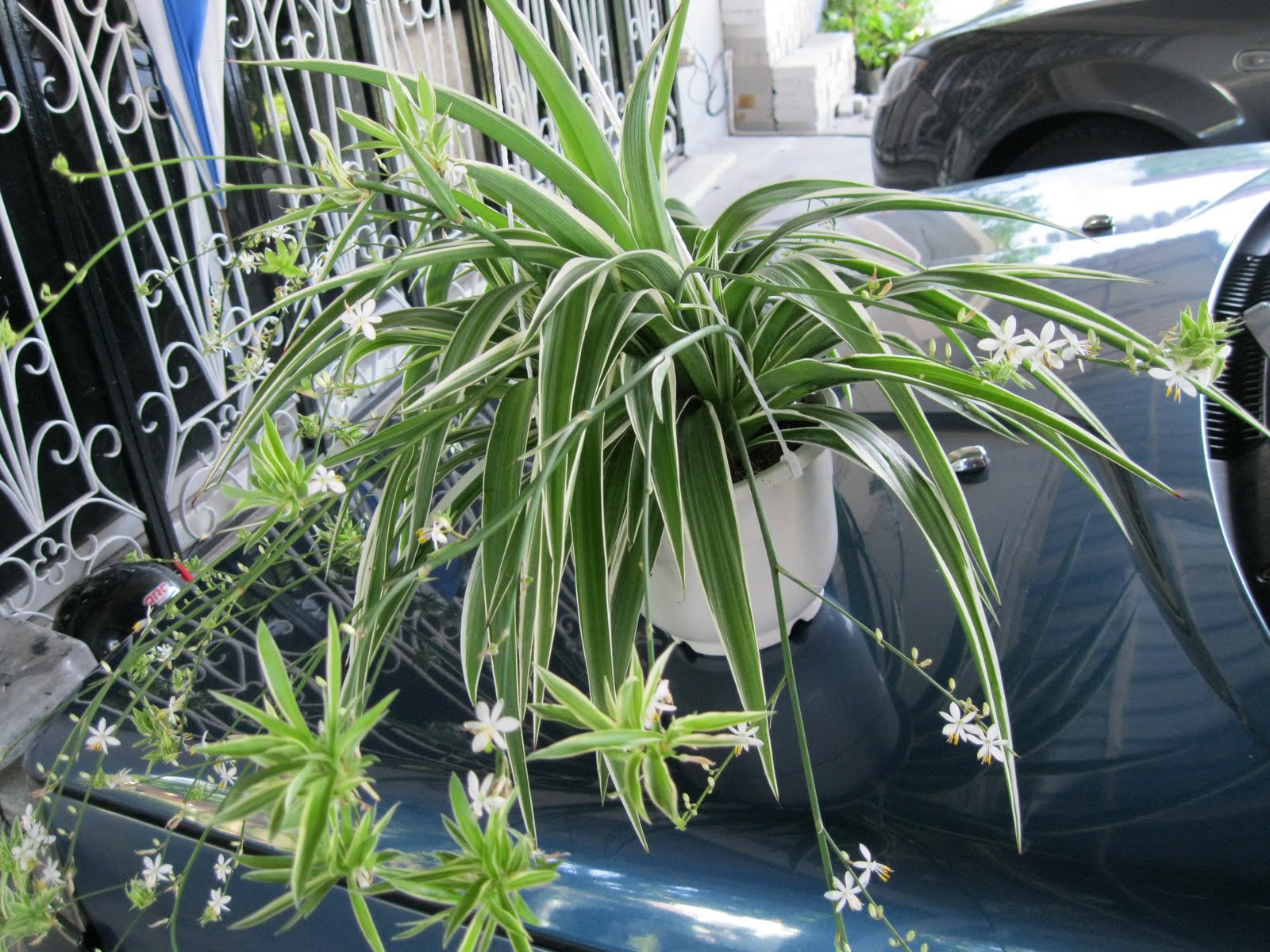Spider plants are one of the most popular houseplants, and for good reason. They are extremely easy to care for propagate quickly and add a touch of greenery to any space. One of the best parts of spider plants is that they occasionally produce delicate white flowers on long arching stems. These charming blooms make an already attractive houseplant even more special.
About Spider Plant Flowers
Spider plants are known for their long, strappy green leaves that cascade down in a fountain-like effect But did you know that under the right conditions, they also grow dainty white flowers?
Spider plant blooms appear at the ends of the plant’s wiry, arching stems The flowers tend to be small, with three to six petals each They grow in clusters or singly, depending on the specific spider plant variety.
When Do Spider Plants Bloom?
Spider plant flowers generally appear when the plant is mature and slightly pot bound. Providing the right growing conditions is key to getting your spider plant to produce flowers. Here are a few tips:
-
Lighting – Spider plants need bright, indirect light from a southern or western window. Rotate the plant periodically for even sunlight exposure. Too much or too little light may prevent flowering.
-
Seasonal Light Changes – Spider plants bloom in response to shortening days and longer nights. Providing 12-14 hours of uninterrupted darkness for at least 3 weeks can trigger flowers.
-
Maturity – Younger spider plants may bloom when very small, but then not flower again until mature. Wait for your plant to reach its full size potential before expecting blooms.
-
Fertilizer – Overfeeding spider plants with fertilizer can lead to lush foliage but no flowers. Use a weak liquid fertilizer at 1/4 strength during the growing season.
Caring for a Flowering Spider Plant
Caring for a spider plant with flowers takes the same basic care as a non-flowering plant. Here are a few simple tips:
-
Water whenever the top inch of soil is dry. Take care not to overwater, as too much moisture can lead to root rot.
-
Prune off spent flower stems down to the base of the plant. This tidies up the appearance.
-
Turn the plant periodically so all sides receive equal light for even growth and flowering potential.
-
Apply a weak liquid fertilizer every 2-4 weeks in spring and summer. Discontinue feeding in fall and winter.
-
Repot in fresh potting mix every 2-3 years as needed when roots fill the container. Select a pot one size larger.
Enjoying Spider Plant Flowers
The charming white blooms on arching stems create a delicate and eye-catching display. Here are some ways to highlight your spider plant flowers:
-
Grow in a hanging basket so the long flower stems can cascade down dramatically.
-
Place on a plant stand near a window where the flowers and foliage can be backlit by natural light.
-
Arrange near white furniture or décor so the white color contrasts nicely.
-
Mix with other green foliage plants like pothos or philodendron so the white flowers stand out.
-
Photograph the blooms up close to capture their intricate details and subtle color.
Common Spider Plant Varieties with White Flowers
Many popular spider plant varieties produce white blooms. Here are some of the most common types to watch for flowers:
Variegated Spider Plant
This classic spider plant has green leaves striped with white. The offshoots are tinged pink. Their arching flower stems display white blooms.
Bonnie Spider Plant
Compact Bonnie has curled leaves in green and yellow. It stays under 1 foot tall but sends out dainty white flowers on thin stems.
Bichetii Spider Plant
Also called St. Bernard’s Lily, this variety has lance-shaped dark green leaves. In summer it bears white starry flowers pollinated by moths.
Hawaiian Spider Plant
This large spider plant has wide striped leaves. It can grow up to 3 feet wide and produces clusters of small white blooms.
White Lightning Spider Plant
True to its name, this variety has bold white stripes on its leaves. It bears pretty white flowers on arching 2 foot stems.
Propagating from Flowering Spider Plants
If you want more spider plants after yours flowers, propagation is easy. Wait for the flowers to fade, then green seed pods will appear. Allow these to mature until they turn brown and split open.
Inside will be small black seeds. Simply plant several seeds in a container of moist potting mix. Cover lightly with soil and place in indirect light. In a few weeks, new young spider plants will begin to sprout.
Spider Plant Flowers Add Beauty
Part of what makes spider plants so popular is how easy they are to grow. Adding flowering to the mix just makes these houseplants even more attractive and interesting! Give your spider plant the right care and lighting conditions, and with luck you’ll be rewarded with a graceful display of delicate white blooms.
Spider Plant – Flowering
FAQ
Why does my spider plant have white flowers?
Should I cut off spider plant flowers?
What happens when a spider plant flowers?
What are the long stems on a spider plant with flowers?
- A Complete Guide to Caring for Yuki Cherry Blossom Shrub - January 23, 2025
- Identifying Red Hot Poker Seeds: What to Look For When Harvesting Torch Lily Pods - January 23, 2025
- A Complete Guide to Harvesting Evening Primrose Seeds - January 23, 2025

